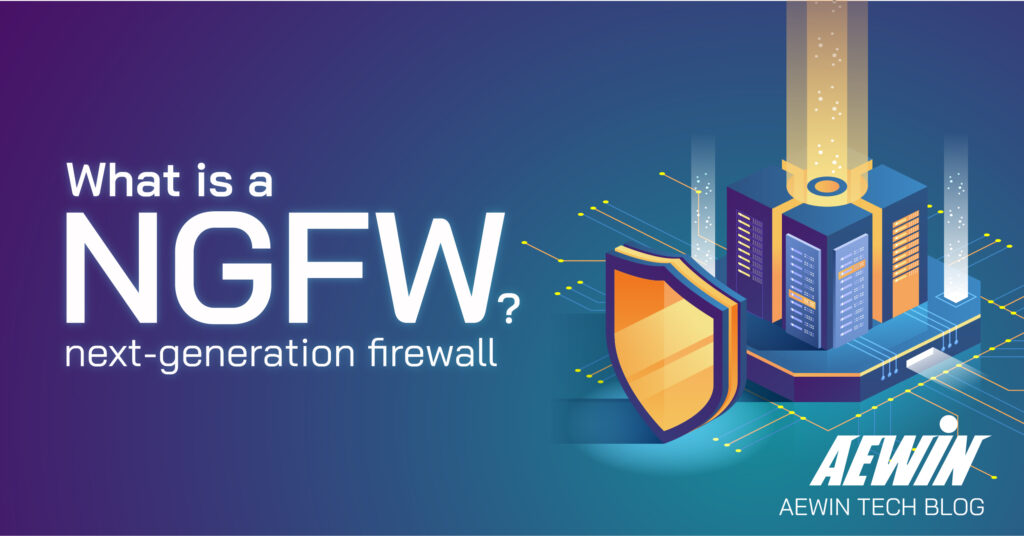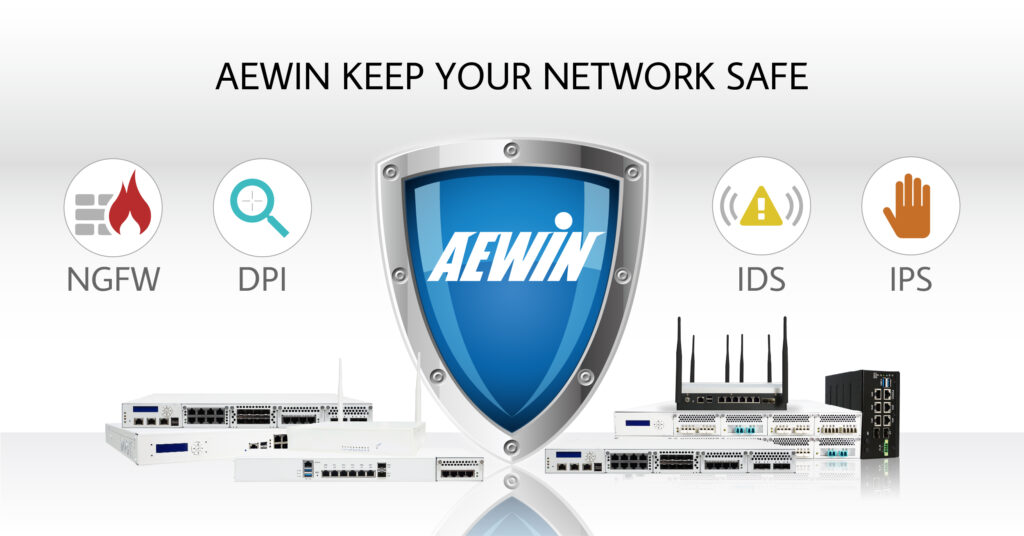
Introduction
The evolution of NGFW
At the very beginning of the development of firewall, it meets the requirement of early-stage network isolation by implementing access control and filtering. With the integration of TCP/UDP inspection, traditional firewall works at layer 2 to layer 4. To consolidate several appliances into one, UTM provides multiple security functions including firewall, IPS, anti-virus, VPN, load balancing, etc.
As diverse web applications pomp up under the fast-moving world, the relationships between the applications, ports, and protocols become more and more complex. The situation led to the birth of NGFW which can process traffic filtering with deeper levels of packet content inspection up to the layer 7 (application layer) in the OSI stack to improve the overall efficiency. Let us take a closer look at NGFW.
What is a NGFW
A next-generation firewall (NGFW) is a network security device having capabilities beyond a traditional firewall of stateful inspection, packet filtering, NAT, VPN, etc. NGFW is with valuable features like DPI, IPS, Identity management integration, TLS/SSL/SSH inspection, and more to deal with complex and highly intelligent cyberattacks to secure the network security effectively.
We will be showing further details of features and benefits of NGFWs to see its capabilities and the role in the networking ecosystems.
Features and Benefits of NGFW
Features
- DPI (Deep Packet Inspection)
With Deep Packet Inspection (DPI), the packet filtering of NGFWs can locate, identify, classify, and reroutes or blocks packets with specific data or payloads to handle advanced malware threats that conventional one cannot do as those threats could not be detected from only examining packet headers.
In addition to DPI, there are further inspection related feature like as TLS/SSL/SSH Inspection, Encrypted traffic inspection, and more to help to ensure cybersecurity.
- IPS (Intrusion Prevention System)
Integrated with Intrusion Prevention System (IPS), NGFWs can place strategic reaction to block the attack based on the detection of suspicious activities without administrator intervention. NGFWs can be more intelligent to defend the security proactively with the deeper integration of IPS.
- Application Identify and Management
One of the important capabilities of NGFWs is to clearly understand the services in 7 layers and implement refined security management with the application awareness for a better network security.
In addition to the mentioned ones, NGFWs can enhance the security strategy with accessing the external information to optimize the ability of management/control.
Benefits
- Advanced Security
NGFWs combine multiple security technologies including DPI, IPS, application visibility, etc. to identify/ prevent unknown cyberattacks and to protect/ maintain network security even under the constantly and rapidly changing threat landscape.
- Higher Efficiency
Centralized monitoring and management allow better visibility for efficient management, e.g., the unnecessary, bandwidth-intensive applications running on the network can be identified, and the need of additional bandwidth can be decreased accordingly.
- Cost-effectiveness
As an NGFW can do much more than just a traditional firewall, the multi-function feature can help to lower the TCO as single system can replacing several devices. Also, consolidating security solutions with higher efficiency deliver enhanced customer services at a lower cost.
NGFWs are not only the money-saving appliance, but also provide powerful network security for the fast-evolving ecosystems.

Conclusion
The firewall has been developed according to the constantly changing environment and the next-generation firewall has the ability of traditional firewall plus further security features including DPI, TLS/SSL/SSH Inspection, Encrypted traffic inspection, IPS, application awareness, and more to prevent and combat threats from Core, Edge to Cloud environments.
- NGFWs Options:
SCB-7910: Intel Denverton Refresh edge network appliance with QAT and TPM2.0
SCB-1826: Intel Comet Lake-S/ Rocket Lake-S platform with 4x Network Expansion Modules
SCB-1833: AMD Ryzen 3000/5000 platform with 4x Network Expansion Modules
SCB-1931: Intel 3rd Gen Xeon Ice Lake-SP with 4x Network Expansion Modules
SCB-1932: Dual Intel 3rd Gen Xeon Ice Lake-SP with up to 8x Network Expansion Modules
SCB-1937: Dual AMD Ryzen 7000 with up to 8x Network Expansion Modules
Please don’t hesitate to contact AEWIN friendly sales to know more!